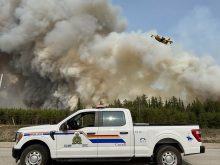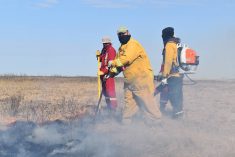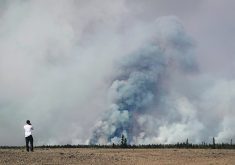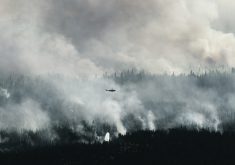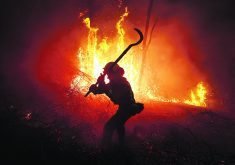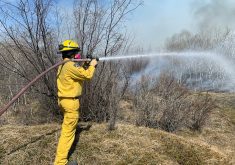Cause of the fire that killed livestock and destroyed buildings and fences may determine compensation strategy
The cause of an Oct. 17 wildfire that began near Hilda, Alta., and spread into Saskatchewan is likely to determine what assistance is available to farmers and ranchers who sustained losses.
Alberta’s Office of the Fire Commissioner is still investigating the cause amid unconfirmed reports that the wind reignited embers in a fire pit used a few days before unprecedented high winds struck the southeast Alberta region.
There was a permit for that fire because an earlier fire ban had been lifted by Cypress County after an early October snowfall.
Read Also

No special crop fireworks expected
farmers should not expect fireworks in the special crops market due to ample supplies.
Cypress County Reeve Richard Oster said fund availability through the province’s disaster recovery program will depend on the fire’s cause.
“Only losses and damages for which a responsible party cannot be determined following the event are eligible for financial assistance,” Oster said.
“If the commissioner confirms the cause of the fire … then that could mean that’s who would be held liable. That could change everything.”
In the meantime, he said the county is proceeding as though the fire was an act of God and is collecting information from fire-affected residents so it can compile an application for funds from the province.
Oster and rural officials from the Municipal District of Acadia met with Alberta Agriculture Minister Oneil Carlier and Municipal Affairs Minister Shaye Anderson last week in Edmonton to discuss potential assistance with the fire damage and costs.
The blaze burned 85,000 acres of grass in Alberta and Saskatchewan and destroyed stored grain and feed, farm buildings, livestock and fences.
“They really want to do something,” Oster said. “They want to try and figure out how they can help us but still stay in the parameters of the program, the disaster recovery program.”
The fire that affected those in the MD of Acadia and Village of Empress on the same day in October was a separate blaze caused by a downed power line.
Brent Williams, chief administrative officer for the MD, said last week’s meetings, particularly the one with Anderson, provided some hope that the municipality will be eligible for DRP funds.
“It allows private landowners a vehicle to apply through the municipality to the province for their private losses,” said Williams.
Anderson told MD and county officials that the fires don’t meet the standard definition outlined in the DRP but encouraged them to collect data for a submission.
Williams said Acadia and Cypress approached the matter as a region affected by wildfires, which they felt put them in a stronger position to access funds.
“Fire and flooding are two different events in the eyes of the government, but we feel that given the scope of these fires, the causes of these fires combined with really the severe weather event that was occurring that day … it doesn’t really meet the definition or scope of a regular grass fire,” Williams said.
In the meeting with Carlier, Acadia and Cypress asked about options within the federal-provincial AgriRecovery program.
“(Carlier) stated that the scope of the damage was not wide enough and the government wouldn’t be implementing that program. So he was very non-committal,” said Williams.
“He didn’t really say too much, in spite of us asking questions and him answering them. He did say that he hopes to find wiggle room somewhere in the near future to help out, but what that means is anyone’s guess.”
Williams said MD of Acadia officials also met with ATCO personnel last week to discuss the electrical company’s downed power line that started the fire there.
“They reopened the investigation,” Williams said about ATCO.
“They’re taking a lot of steps to try to figure how this happened and most of all they have opened communication lines with the MD of Acadia and the private landowners, and contacting them individually, which we really appreciate.”
Williams said he expects to have ATCO’s report within the next two weeks, at which time they will discuss next steps.




